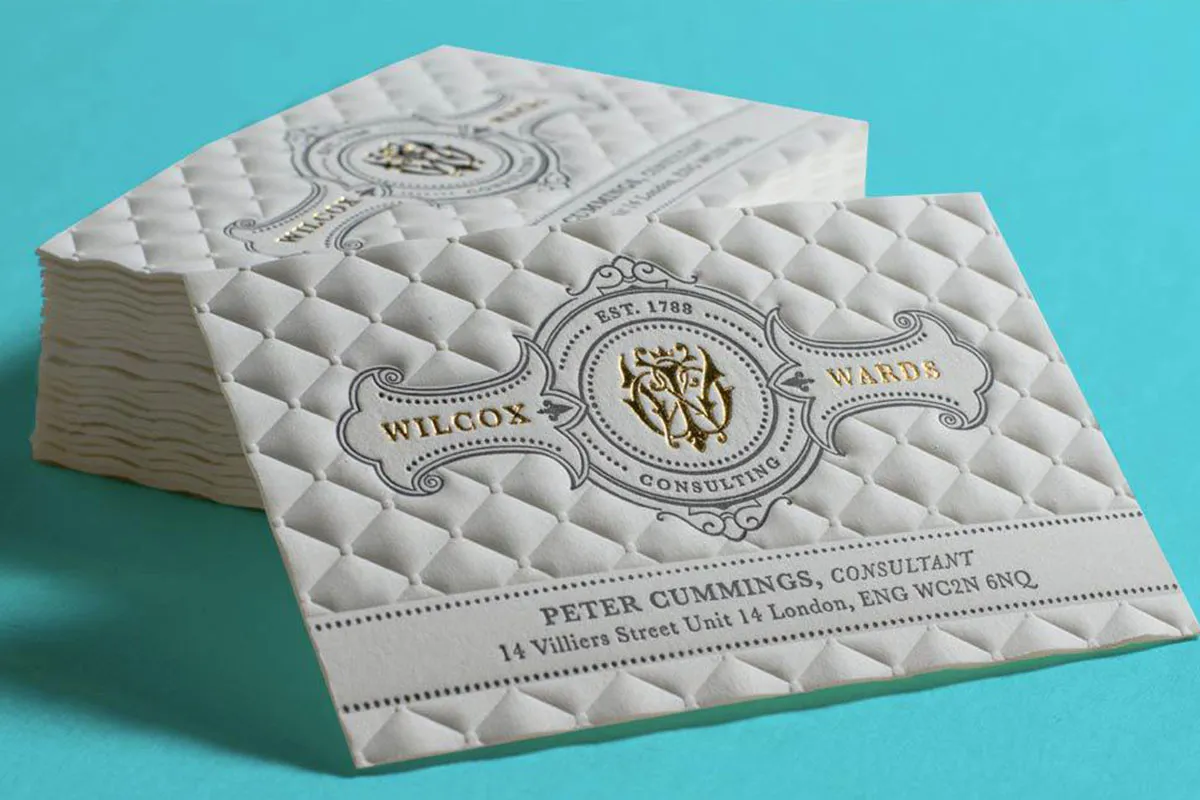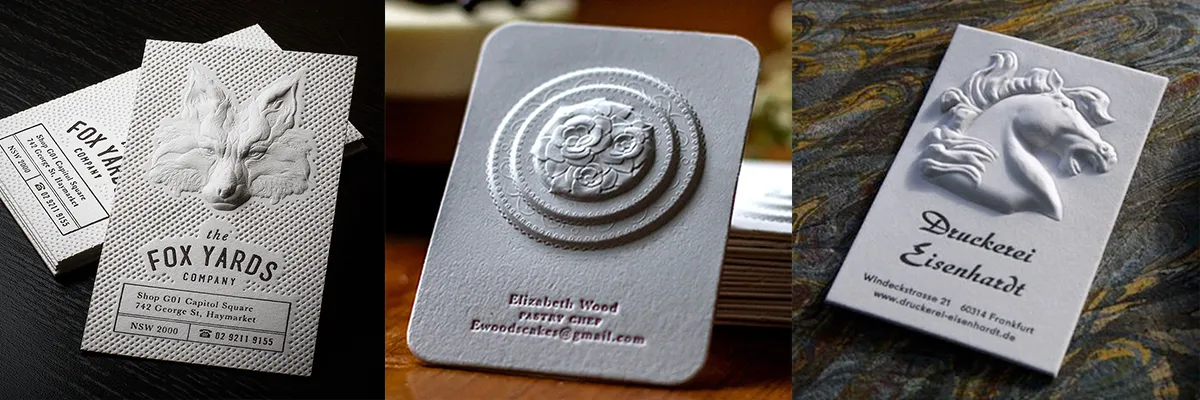No products in the cart.
Process
3D emboss process|three-dimensional embossing business cards
What is 3D emboss?
3D Embossing is a specialty embossing technique exclusive.Regular embossing offers one level of raised texture while 3D embossing can have multiple depths and graduated levels. The sculpted look of a design with multiple heights and depths can only be achieved using a 3D emboss process. Production for 3D embossed cards have a higher cost because they require many more steps and the overall creation is a slower and more detailed process.
3D embossing is only possible with a “blind” impression. This means, the 3D emboss must be located in an area of the design where no ink will be printed. 3D embossing looks best when the blank paper itself is sculpted and shaped instead of matching to a print. 3D embossing also looks best on thicker, softer paper stocks such as 40pt Cotton.
3D Emboss Business Cards: The Pinnacle of Luxury
Many would agree that the beauty of a business card is its tangibility. In a world that is fast moving towards digital interactions, the tactile experience of paper is becoming treasured, and it’s not an overstatement to say that the ultimate sensory indulgence is 3D Emboss business cards. The innovative and complex process of 3D embossing is a lavish addition to the already unique art of embossing, imparting a stunning relief effect to specific elements of your design to extraordinary heights rarely seen in traditional embossing, all while preserving incredibly fine detail.
Finding the Best Paper for 3D Embossing
The intricate opulence of 3D embossing can be produced only on the best cotton papers from around the world. Fine cotton paper withstands the intense pressure used to raise the surface of the paper and create a beautiful three-dimensional effect, yet still shows a delicate texture.
Adding Printing Accents
The excitement needn’t stop at the 3D embossing, as this process can be used in combination with other printing methods like letterpress and foiling. Nothing beats the timeless elegance of letterpress paired with the luxury of 3D embossing!
What is the difference between Embossing and 3D Embossing?
3D Embossing is a specialty type of embossing. Standard embossing offers one level of impression; with 3D Embossing the indent can be sculpted and gradated, with different levels and shapes.
Embossing
Standard/regular embossing. One level of impression.
3D Embossing
Sculpted impression
3D Embossing has a higher cost than standard Embossing, as it one of our most specialized print services and most expensive options.
Please note our 3D Emboss technique does not allow for a 2-ply card in combination with this process. There cannot be any design or print on the back side of a 3D Embossed card, and you cannot hide the impression visible on the back side of the card.
2-ply options are available for regular Embossing only. You can also print on the back side of a 1-ply order that includes a regular Emboss.
Design Considerations for 3D Embossing
Please take into consideration the following factors when creating your 3D embossed design:
Fine Detail
The finest detail possible for an emboss is 1pt.
Safety Margin
The embossed areas must be at least 0.25 inches away from the trim lines on all sides. A 3D embossed design cannot bleed to the edge and must stay within this safety margin.
Impression
The reverse impression of the emboss will show on the back of the cards. You cannot have a 2-ply created in combination with 3D embossing, and cannot have any printing on the back side of the card with the 3D emboss process.
Blind Emboss
3D embossing is only possible as blind embossing. See: Blind Embossing. 3D Embossing can be combined with Letterpress printing (when not registered).
Vector Format
Press-ready files for 3D embossing must contain vector graphics only. See: What is a vector.



